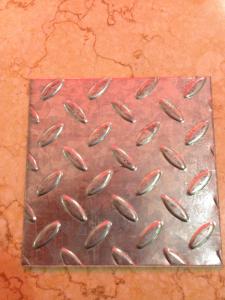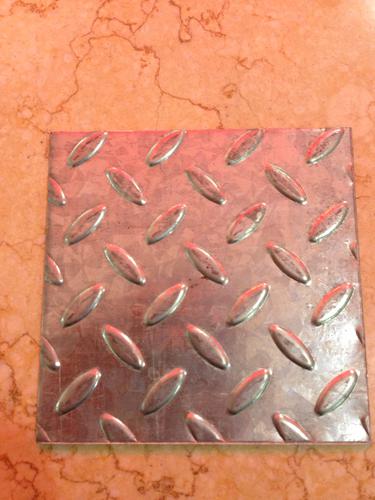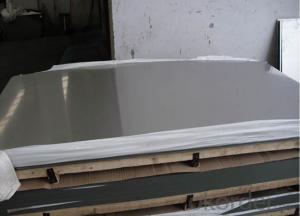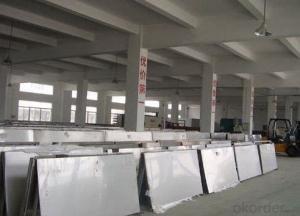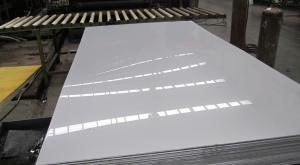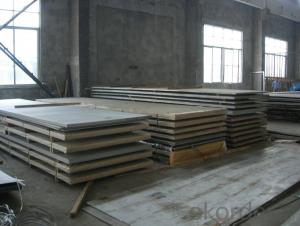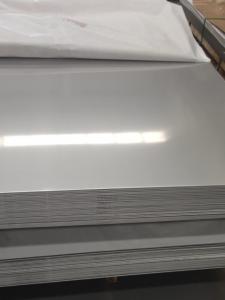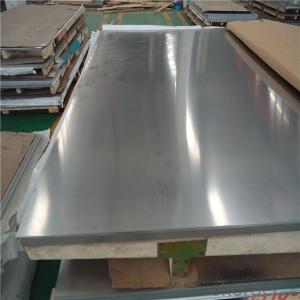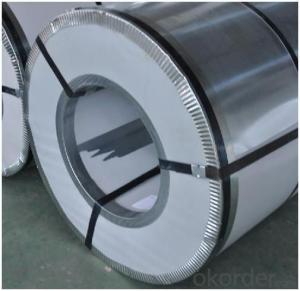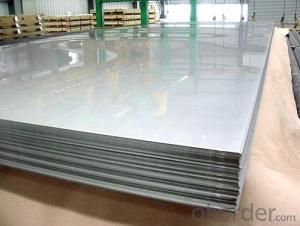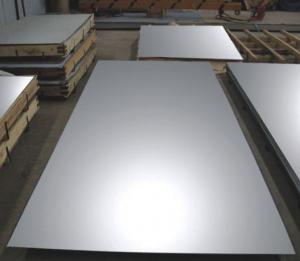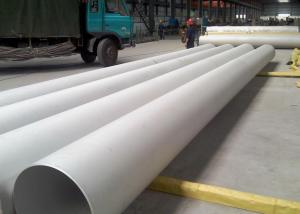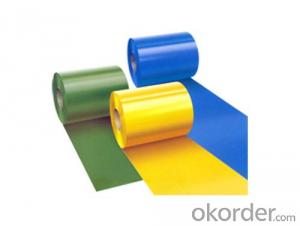stainless steel plate cold rolled and hot rolled 201
- Loading Port:
- Tianjin
- Payment Terms:
- TT or LC
- Min Order Qty:
- 4 m.t.
- Supply Capability:
- 5000 m.t./month
OKorder Service Pledge
OKorder Financial Service
You Might Also Like
1.Structure of Product Description
Cold rolled Stainless steel sheet is widely the field of construction field and decoration field, etc. There are many derent grades, such as: 200 series,series, 400 series, 900series, etc. The deed grade are as follows: 201, 202, 301, 304, 316, 410, 420, 430, etc.
The surface is including 2B, BA, Mirror Finish, Checkered, etc.
2. Main features of the product
a. Competitive price
b. Frist-Class Service.
c. Shortest service.
3. Image.
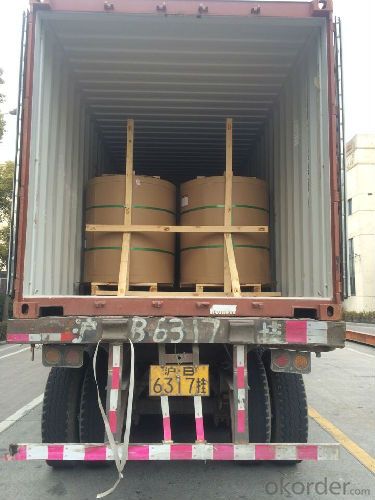
4. Product detailed sizes:
1000mm*2000mm, 1219mm*2438mm,1220mm*2440mm, 1250mm*2500mm,1500mm*3000mm, etc.
5. FAQ:
What is the quality standard?
---Usually is GB3880-2006 or else.
What is the width range?
---It is to 2500mm, etc.
What is the length range?
---It is from 2000mm to 6000mm, etc.
What is your products yet?
---Normally it is around 3 tons/each size.
How many tonsexport in one year?
---Normally it is around 9000 tons totally.
Where is your client from?
---Normally it is from Japan, USA, ENGLISH, SINGAPORE, ETC.
What is your mainly products?
---Normally they are stainless steel sheet, stainless steel coil, stainless steel checkered sheet, stainless steel mirror finished sheet, color coated stainless steel sheet, etc.
- Q: Can stainless steel sheets be bent?
- Yes, stainless steel sheets can be bent. Stainless steel is a versatile material that can be easily formed into various shapes and configurations, including bends. The ability to bend stainless steel sheets is dependent on the thickness and composition of the material. Thinner sheets are generally more flexible and easier to bend, while thicker sheets may require specialized equipment and techniques. It is important to note that the bending process may cause the stainless steel sheet to lose some of its strength and durability, so careful consideration should be given to the specific application and requirements before attempting to bend stainless steel sheets.
- Q: What are the different types of stainless steel sheet finishes for decorative purposes?
- There are several types of stainless steel sheet finishes commonly used for decorative purposes, including brushed, mirror, embossed, and patterned finishes.
- Q: What is the corrosion resistance of stainless steel sheets in saltwater?
- In saltwater environments, stainless steel sheets exhibit excellent resistance to corrosion. This is because the high levels of chromium found in stainless steel facilitate the development of a passive oxide layer on the surface. This layer serves as a protective barrier against corrosion and is highly resistant to saltwater, thereby preventing direct exposure of the metal to the corrosive effects of the saltwater. Moreover, stainless steel alloys such as 316 and 316L contain molybdenum, which further enhances their resistance to pitting and crevice corrosion in saltwater. Consequently, stainless steel sheets are the preferred choice for applications in saltwater environments due to their outstanding corrosion resistance properties.
- Q: Are stainless steel sheets suitable for pharmaceutical cleanrooms?
- Yes, stainless steel sheets are highly suitable for pharmaceutical cleanrooms. Stainless steel is a preferred material in cleanroom environments due to its inherent qualities such as corrosion resistance, durability, and ease of cleaning. It is non-porous, making it resistant to bacteria, mold, and other contaminants. Additionally, stainless steel is able to withstand frequent sanitization procedures without deteriorating, making it a reliable choice for maintaining a clean and sterile environment in pharmaceutical cleanrooms.
- Q: Are stainless steel sheets suitable for water treatment facilities?
- Yes, stainless steel sheets are highly suitable for water treatment facilities. Stainless steel is known for its corrosion resistance, which is crucial in an environment where water and chemicals are constantly present. It is resistant to rust and degradation, ensuring the longevity and durability of the sheets. Additionally, stainless steel is easy to clean and maintain, making it an ideal choice for facilities that require regular hygiene and sanitation. The material is also highly resistant to heat and extreme temperatures, ensuring its performance even in demanding conditions. Moreover, stainless steel is non-reactive, meaning it does not release harmful substances into the water during treatment processes, making it safe and reliable for water treatment applications.
- Q: How do I choose the appropriate gauge for stainless steel sheets?
- There are several factors to consider when deciding on the appropriate gauge for stainless steel sheets. Firstly, it is important to determine the purpose or application of the sheets. Specific gauges are suitable for different uses. For instance, thinner gauges (higher numbers) like 26 or 28 are commonly used for decorative purposes, while thicker gauges (lower numbers) such as 14 or 16 are more suitable for industrial applications that require strength and durability. Secondly, the environment in which the sheets will be used should be taken into account. If the sheets will be exposed to harsh conditions like high temperatures, corrosive chemicals, or heavy impact, it is advisable to choose a thicker gauge to ensure they can withstand these conditions. Moreover, the size and shape of the stainless steel sheets should also be considered. Larger sheets or those with complex shapes may require thicker gauges to prevent bending or warping. Lastly, budget limitations may impact the gauge selection. Thicker gauges generally come at a higher cost than thinner ones, so finding a balance between desired strength and available budget is important. To summarize, when choosing the appropriate gauge for stainless steel sheets, consider the application, environmental conditions, sheet size and shape, and budget. It is also recommended to seek guidance from a professional or supplier who can provide tailored advice based on your specific needs.
- Q: Are stainless steel sheets resistant to alkaline solutions?
- Generally, stainless steel sheets are resistant to alkaline solutions. They have a reputation for being corrosion-resistant and can tolerate exposure to various chemicals, including alkalis. The protective oxide layer on the surface, formed by the high chromium content in stainless steel, aids in preventing corrosion and deterioration. However, it's worth noting that the resistance of stainless steel to alkaline solutions may differ depending on the specific grade and composition. In certain instances, prolonged exposure to highly concentrated alkaline solutions or aggressive alkaline substances could potentially harm the stainless steel surface. Therefore, it is advisable to consult the manufacturer or supplier to ensure the appropriate grade of stainless steel is chosen for specific alkaline applications.
- Q: How do stainless steel sheets compare to other materials?
- Various industries favor stainless steel sheets due to their numerous advantages over other materials. The exceptional durability and strength of stainless steel are well-known. It can endure high temperatures, pressure, and corrosion, making it suitable for a wide range of applications. Moreover, this durability ensures a longer lifespan and reduces the need for frequent replacements, ultimately saving time and money. Stainless steel sheets also possess excellent resistance to corrosion and rust. This property is particularly crucial in environments with high humidity or exposure to chemicals, as it prevents degradation and maintains the material's integrity. Unlike aluminum or carbon steel, which may require protective coatings or regular maintenance to achieve similar levels of corrosion resistance, stainless steel sheets naturally possess this quality. Furthermore, stainless steel sheets boast a clean and smooth surface finish, making them visually pleasing and easy to clean. This attribute is of utmost importance in industries such as food processing, pharmaceuticals, and healthcare, where hygiene and cleanliness are paramount. Stainless steel sheets also offer versatility in terms of fabrication and customization. They can be easily formed, welded, and shaped into different sizes and configurations, allowing for a wide range of applications. This versatility makes stainless steel sheets suitable for architectural, automotive, and industrial uses. Lastly, stainless steel is environmentally friendly. It is 100% recyclable, meaning it can be melted down and reused without any loss in quality or performance. This recyclability reduces the demand for new materials and minimizes the environmental impact associated with manufacturing processes. In summary, stainless steel sheets surpass other materials in terms of durability, corrosion resistance, cleanliness, versatility, and environmental sustainability. These qualities establish stainless steel sheets as the superior choice for various industries and applications.
- Q: Can stainless steel sheets be used for pressure vessels?
- Indeed, pressure vessels can utilize stainless steel sheets. Renowned for its exceptional resistance to corrosion, stainless steel stands as an optimal material for pressure vessels that face severe conditions or corrosive substances. Moreover, it possesses remarkable strength and favorable mechanical properties, enabling it to endure the internal pressure exerted by the fluid or gas within the vessel. Furthermore, the malleability and weldability of stainless steel sheets facilitate the creation of pressure vessels in the desired shape and size. Consequently, stainless steel sheets emerge as a prevalent selection for pressure vessels across diverse industries, including oil and gas, chemical processing, and pharmaceuticals.
- Q: How do you prevent pitting corrosion on stainless steel sheets?
- To prevent pitting corrosion on stainless steel sheets, there are several measures that can be taken: 1. Proper alloy selection: Choosing the right grade of stainless steel with high resistance to corrosion is crucial. Grades such as 316 and 904L are known for their excellent resistance to pitting corrosion. 2. Passivation: Stainless steel sheets should be passivated after fabrication to remove any free iron or contaminants on the surface. Passivation involves treating the sheets with an acid solution, followed by a thorough rinse and drying. This helps to restore the protective chromium oxide layer on the surface, enhancing corrosion resistance. 3. Regular cleaning and maintenance: Stainless steel sheets should be cleaned regularly to remove any dirt, debris, or contaminants that can lead to pitting corrosion. Mild soap, water, and a soft cloth or sponge can be used for routine cleaning. Harsh or abrasive cleaners should be avoided. 4. Avoid exposure to aggressive environments: Stainless steel sheets should be protected from exposure to chemicals, chlorides, acids, and other corrosive substances. If such exposure is unavoidable, proper measures like the use of protective coatings or barriers should be implemented. 5. Avoid stagnant conditions: Pitting corrosion is often accelerated in stagnant or low-flow conditions where oxygen levels are depleted. Ensuring proper ventilation and circulation of air or fluids can help prevent pitting corrosion on stainless steel sheets. 6. Regular inspection and maintenance: Periodic visual inspection and monitoring of stainless steel sheets can help identify any early signs of pitting corrosion. If any pitting is noticed, immediate action should be taken to address the issue, such as applying a suitable corrosion inhibitor or protective coating. By following these preventive measures, it is possible to minimize the risk of pitting corrosion on stainless steel sheets, ensuring their long-term durability and performance.
Send your message to us
stainless steel plate cold rolled and hot rolled 201
- Loading Port:
- Tianjin
- Payment Terms:
- TT or LC
- Min Order Qty:
- 4 m.t.
- Supply Capability:
- 5000 m.t./month
OKorder Service Pledge
OKorder Financial Service
Similar products
Hot products
Hot Searches
Related keywords
